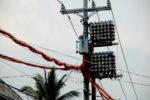A number of power generation and energy storage system (ESS) projects totaling 4,531.82 megawatts (MW) and 40 megawatt hours (MWh) in storage have applied for grid connection with the National Grid Corporation of the Philippines (NGCP) in January, according to the Department of Energy (DOE).
The NGCP is tasked with conducting system impact studies (SIS) to assess how new energy projects affect grid operations, such as whether additional transmission infrastructure—like lines, transformers, or substations—are needed. The studies are a critical part of the approval process for power generation projects and ESS installations in the Philippines.
Most notable is the 2,000-MW pumped-storage hydroelectric (PSH) project of Pan Pacific Renewable Power Philippines Corp. in Apayao. The project is expected to have a significant impact on the national grid if it moves forward, and leads the list in capacity terms.
Other applications include two 800-MW PSH projects proposed by San Roque Hydropower Inc. in Benguet, and the 304-MW wind project advanced by Gemini Wind Energy Corp. in Samar. Airstream Renewable Corp. also applied for its 200-MW offshore wind farm in Quezon Province, alongside a similar 200-MW wind project from Northmin Renewables Corp. in Misamis Oriental. Lesser projects, such as wind farms and hydroelectric power plants, also made the list, indicating diverse energy generation interests.
Although the projects are hopeful signs of expansion, there is no guarantee they will proceed as planned. Funding challenges, grid line availability, and the need for offtake agreements all help determine whether the projects are ultimately realized.
But the influx of applications highlights a growing interest in renewable energy solutions and underscores the increasing corporate drive for large-scale energy infrastructure development in the Philippines. With the government’s focus on diversifying energy sources and meeting rising demand, the projects represent critical steps toward a more sustainable energy future. However, their success will depend on navigating a complex web of technical and financial hurdles.







